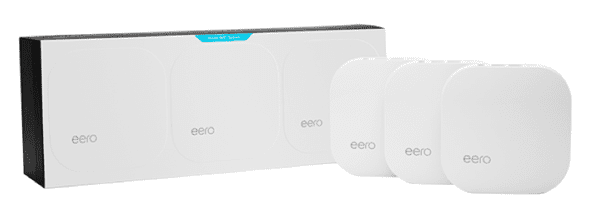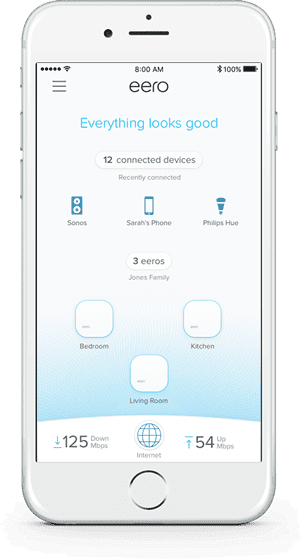Tired of that inefficient WiFi network at home that is reliant on a sole router? Want to get rid of all those dead zones so you can always be connected to the web, wherever you are in the house? Then it’s time to figure out which wireless internet network is best suited for your needs. With the various systems available in the market, you are certainly spoilt for choice. To help you narrow down your options, let us focus on the three leading names in the home WiFi landscape at the moment – Luma, Eero, and Ubiquiti.
Luma – Secure and Total Connectivity
“Say goodbye to WiFi dead zones.” This is the promise that Luma, a company that sells a collection of three WiFi routers, offers their customers. They provide top internet speeds and can be counted on to ensure internet access anywhere in your home.
High Level of Connection Security Is Guaranteed
There are many WiFi mesh networks that promise speed and dependability. So what sets the Luma apart? Well, it truly takes reliability seriously. This does not only mean that you won’t be experiencing router-caused internet interruptions. This also means that your connection is protected since the network is capable of neutralizing threats.
It has a built-in anti-hacker system. Plus, you have the control to grant or revoke user access. You will be alerted right away, too, if unauthorized users are trying to connect to your home WiFI. Also, your devices will have an extra layer of protection against viruses, spyware, and other malware.
Lastly, the product comes with a smartphone app for better control. Parents with young children will especially find the Luma app very helpful since it enables content restriction. You can easily tweak your children’s internet access and ensure they don’t open sites with non-kid-friendly content.
How Does It Work?
Only three small routers are needed, and the principles of a mesh network, to create a complete connectivity blanket in and around your house. The routers are small (4.13” by 4.60” by 1.18”) and well designed with a LED tri-color ring. They are painless to set up and super convenient to use.
The really nice thing about Luma is that it is made with different household needs in mind. After all, not all homes are the same. Some properties have three floors while others may just have one. Floor plans and the size of the living space need to be considered as well.
Before you set up the routers, you will have the opportunity to customize the network based on your needs. By using the Luma app, you can specify the type of your home and how many floors there are. You will then be advised where to place each of the routers for the best effect.
Since users’ convenience and satisfaction are a priority, the setup process can be done in minutes. Afterwards, you can use the app to control and monitor the network in utmost comfort. Any device in your home that requires internet connectivity will then be able to access the network. Expect high streaming, download, and upload speeds even if multiple devices are online at the same time. And since Luma recently got Alexa integration, more convenience is now possible via voice controls.
How Much Does it Cost?
The Luma is yours for only $299. This price includes the three router devices, which operate with a Quad-core processor and work on simultaneous dual-band frequency of 2.4GHz and 5GHz. You will also get a power adapter and an Ethernet cable. With the reliability and speed you will enjoy, this is great value for your money.
eero – Stability and Simplicity
Another reliable WiFi mesh network is the eero. The whole system involves one to three devices, and it promises, “No more buffering. No more dead zones.”

TrueMesh™ Defeats Regular Extenders
eero operates using the TrueMesh technology, which is designed to boost your home’s connectivity. Sure, WiFi extenders can improve coverage, but unfortunately, the bandwidth will not be properly distributed and the signal won’t effectively blanket the whole house. With eero, however, you don’t have to worry about your connection even if you are in the attic or the basement.
How Does It Work?
Just like the Luma, you need to place your eero devices in the right places around your house to enjoy fast internet connection everywhere. You have the choice to use one, two, or three eeros depending on the size and floor plan of your home. Connect one eero to your modem, then set up the rest in the most appropriate place. Don’t worry, the network comes with a companion app too, which will make the setup trouble-free.

Control your WiFi network via an app.
On the eero app, you will be able to configure advanced settings, such as Port Forwarding, flux capacitation, DHCP, UPnP, DNS, and NAT. You will also be able to monitor the net speed your ISP is providing you. Aside from that, parental controls and user access controls are available as well. Convenience in the palm of your hands.
The eero also integrates Alexa so you can control the network via voice prompts. When it comes to security, the system uses WPA2 encryption to protect your connection.
How Much Does It Cost?
An individual eero will cost you $199, while the 2-pack starter WiFi system is priced at $349. The 3-pack Home WiFi System, meanwhile, costs $499.
Ubiquiti – Enterprise WiFi for Your Home
Whereas the Luma and eero names are known for their home WiFi mesh network, Ubiquiti specializes in enterprise and industrial settings. The company is recently recognizing the opportunities in the residential market, though. That is why they released products like the AmpliFi HD, which can be used for the home. For those willing to delve into actual enterprise WiFi, take a look at UniFi.
Just like Luma and eero, AmpliFi HD involves 1 or more devices to extend the WiFi connection in a space, getting rid of dead zones without compromising data speed and reliability. The same goes for the other choices in Ubiquiti’s wide range of products.
A smartphone app is also provided to make setup easy, and to ensure network monitoring and control is not a problem later on.
How Much Does It Cost?
Ubiquiti’s AmpliFi HD is currently priced at $349. This includes the main device, or the router base station, plus two antennas that you need to plug into a socket. The router base station has an LCD screen, but the whole setup does not include voice control and security support is limited.
Conclusion
Homes vary and so do household internet needs. The eero, Luma, and Ubiquiti’s AmpliFi HD all have their own merits, not the least of which is providing total and speedy coverage. So it is best to carefully consider your home’s specific WiFi needs and base your decision from there.


